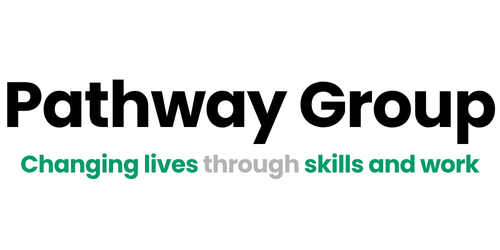Knowledge, Skills & Behaviours (KSBs)
KSBs are the core attributes that you must have as an apprentice in order to be competent in the occupation that you’re working in. They sit alongside your technical studies and exams and are the main assessment methods used in an end point assessment (EPA). Think of it like the soft skills you see in the workplace.
- Knowledge – the information, technical detail, and ‘know-how’ that someone needs to have and understand to successfully carry out the duties. Some knowledge will be occupation-specific, whereas some may be more generic.
- Skills – the practical application of knowledge needed to successfully undertake the duties. They are learnt through on- and/or off-the-job training or experience.
- Behaviours – mindsets, attitudes or approaches needed for competence. Whilst these can be innate or instinctive, they can also be learnt. Behaviours tend to be very transferable. They may be more similar across occupations than knowledge and skills. For example, team worker, adaptable and professional.
Knowledge
- How to shape organisational mission, culture and values.
- Organisation structures; business modelling; diversity; global and horizon scanning perspectives; governance and accountability; technological and policy implications.
- New market strategies, changing customer demands and trend analysis.
- Innovation; the impact of disruptive technologies (mechanisms that challenge traditional business methods and practices); drivers of change and new ways of working across infrastructure, processes, people and culture and sustainability.
- Systems thinking, knowledge/data management, research methodologies and programme management.
- Ethics and values-based leadership theories and principles.
- Competitive strategies and entrepreneurialism, approaches to effective decision making, and the use of big data and insight to implement and manage change.
- Financial strategies, for example scenarios, modelling and identifying trends, application of economic theory to decision-making, and how to evaluate financial and non- financial information such as the implications of sustainable approaches
- Financial governance and legal requirements, and procurement strategies.
- Organisational/team dynamics and how to build engagement and develop high performance, agile and collaborative cultures.
- Approaches to strategic workforce planning, for example, talent management, learning organisations, group work, workforce design, succession planning, diversity and inclusion.
- Influencing and negotiating strategies both upwards and outwards.
- Brand and reputation management.
- Working with board and other company leadership structures.
- Working with corporate leadership structures, for example, the markets it operates in, roles and responsibilities, who its stakeholders are and what they require from the organisation and the sustainability agenda.
- Crisis and risk management strategies.
- Coaching and mentoring techniques.
- Approaches to developing a Corporate Social Responsibility programme.
- The organisation’s developing communications strategy and its link to their area of responsibility.
The external social and political environment and use of diplomacy with diverse groups of internal and external stakeholders
Skills
- Use horizon scanning and conceptualisation to deliver high performance strategies focusing on growth/sustainable outcomes.
- Set strategic direction and gain support for it from key stakeholders.
- Undertake research, and critically analyse and integrate complex information.
- Lead change in their area of responsibility, create an environment for innovation and creativity, establishing the value of ideas and change initiatives and driving continuous improvement.
- Lead and respond in a crisis situation using risk management techniques.
- Act as a Sponsor/Ambassador, championing projects and transformation of services across organisational boundaries such as those impacted by sustainability and the UK Net Carbon Zero by 2050 target.
- Challenge strategies and operations in terms of ethics, responsibility, sustainability, resource allocation and business continuity/risk management.
- Apply principles relating to Corporate Social Responsibility, Governance and Regulatory compliance.
- Drive a culture of resilience and support development of new enterprise and opportunities.
- Oversee development and monitoring of financial strategies and setting of organisational budgets based on Key Performance Indicators (KPIs), and challenge financial assumptions underpinning strategies.
- Uses financial data to allocate resources.
- Oversee procurement, supply chain management and contracts.
- Use personal presence and “storytelling” to articulate and translate vision into operational strategies, demonstrating clarity in thinking such as consideration of sustainable approaches.
- Create an inclusive culture, encouraging diversity and difference and promoting well-being.
- Give and receive feedback at all levels, building confidence and developing trust, and enable people to take risks and challenge where appropriate.
- Enable an open culture and high-performance working environment and set goals and accountabilities for teams and individuals in their area.
- Lead and influence people, building constructive working relationships across teams, using matrix management where required.
- Optimise skills of the workforce, balancing people and technical skills and encouraging continual development.
- Manage relationships across multiple and diverse stakeholders.
- Lead within their area of control/authority, influencing both upwards and outwards, negotiating and using advocacy skills to build reputation and effective collaboration.
relationships
Behaviours
- Work collaboratively enabling empowerment and delegation.
- Take personal accountability aligned to clear values.
- Curious and innovative – exploring areas of ambiguity and complexity and finding creative solutions.
- Seek continuous professional development opportunities for self and wider team.
Value difference and champion diversity.

